Introduction

Canon users that wanted to get into the fullframe mirrorless E-mount world early were in a good spot: the Sigma MC-11 and the metabones Canon EF to Sony E adapters allowed using Canon EF-mount lenses on Sony cameras with only little limitations. For Nikon F-mount users the situation was sadly way worse and it took some time before the first similar adapter (Commlite CMF-EN1) was released – and that one had a lot of issues.
But suddenly, out of nowhere, the situation changed. With the release of the Monster LA-FE1 and later the LA-FE2 adapter we can now finally adapt Nikon F-mount lenses in a similar quality as those Canon EF-mount ones. The LA-FE2 even allows auto focus with the screwdriven Nikon AF(-D) lenses to work on Sony – something not even possible on Nikon’s own Z-mount cameras. Let’s have a closer look.
Update 07/24: more lenses tested, FW 06 for LA-FE1 tested
Contents
Specifications/Versions
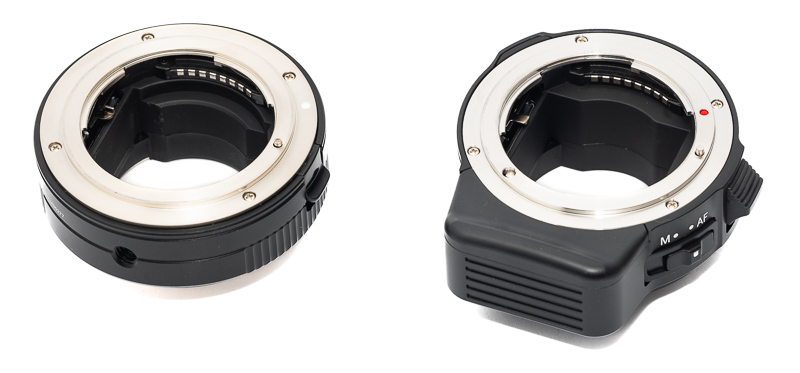
| LA-FE1 | LA-FE2 | |
|---|---|---|
| Weight | 95g (without tripod foot) | 149g |
| Aperture Control | G and E lenses | G and E lenses |
| Auto Focus | AF-S, AF-I, AF-P | AF, AF-D, AF-S, AF-I, AF-P |
| Price | $250 | $440 |
The important difference between these two adapters is that the Mark 2 version also allows autofocus with the AF(-D) lenses that do not feature an in-lens motor to drive the AF.
buy the Monster LA-FE1 for ~$250 from ebay.com | ebay.de (affiliate links)
buy the Monster LA-FE2 for ~$440 from ebay.com | ebay.de (affiliate links)
F-mount Background
Nikon used the F-mount from 1959 to 2018, so unlike Canon and Minolta, Nikon did not change the camera mount when transitioning from manual focus to autofocus. Their first autofocus lenses relied on a motor in camera to drive the focus groups. These lenses are called AF(-D) lenses and they were around from 1986 to 1998, before we saw a wide spread use of the AF-S motors inside the lenses themselves.
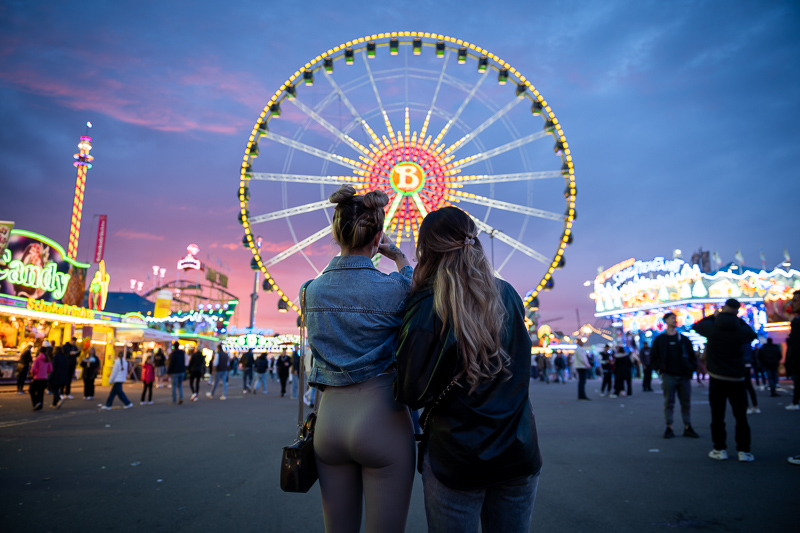
In 2006 Nikon released the entry level APS-C DSLR D40. This was their first DSLR not to feature an internal motor for those AF(-D) lenses anymore and from there on this was generally the case for all the entry and some mid level cameras. All the higher end DSLRs still did though, which includes all of Nikon’s fullframe DSLRs and also the higher end APS-C ones (D7X00 and DX00 series).
When Nikon released their first fullframe mirrorless cameras Z6 and Z7 in 2018 they also released the Nikon FTZ adapter to allow the usage of F-mount lenses on these new mirrorless cameras. However, this adapter did not have a built-in AF motor, so all those AF(-D) lenses only work in manual mode.

It is 2024 now and there is still no adapter from any manufacturer available that would allow the AF of these lenses to work on the Nikon Z-mount mirrorless cameras. However, at the beginning of 2024 Monster released their Monster LA-FE2 AF adapter. This adapter has a built-in AF motor and will allow these lenses to autofocus in combination with a Sony E-mount mirrorless camera.
If you only want to adapt AF-S, AF-I or AF-P lenses (doesn’t matter if they are G or E standard) and not those screwdriven AF(-D) lenses, the cheaper Monster LA-FE1 offers the same performance, it just lacks the built-in motor.
What to be aware of
There are a lot of adapters from a plethora of manufacturers that will allow autofocus of Canon EF lenses to work on Sony E-mount cameras. But almost none that will do the same for Nikon F-mount lenses. The first to hit the market was the Commlite CMF-EN1. It only allowed the AF to work with AF-S lenses that feature their own motor and when I tried this adapter in the past I found its performance to be pretty abyssmal. Maybe there has been a firmware update in the meantime elevating its performance to somewhat acceptable levels, I don’t know.

Based on those experiences I did not expect any decent autofocus performance from these Monster adapters. Oh boy was I wrong about that (jump to Autofocus Section).
There are a few things worth noting though. The manufacturer has a compatibility list on the product page of this adapter and generally you shouldn’t have too high hopes for lenses not on that list. I tried a few older Sigma lenses that are not on the list and they rarely worked properly. I also tried a lot of lenses that are on the compatibility list and this is what I found out:
| LA-FE1 (FW 05) | LA-FE2 (FW 02) | |
|---|---|---|
| Nikon AF-S 24mm 1.4G | OK | OK |
| Nikon AF-S 24mm 1.8G | OK | OK |
| Nikon AF-S 28mm 1.4E | OK | OK |
| Nikon AF-S 28mm 1.8G | OK | OK |
| Nikon AF-S 35mm 1.8G | OK | OK |
| Nikon AF-S 35mm 1.4G | OK | OK |
| Nikon AF-S 50mm 1.4G | OK | OK |
| Nikon AF-S 60mm 2.8G | OK | OK |
| Nikon AF-S 58mm 1.4G | OK | OK |
| Nikon AF-S 85mm 1.4G | OK | OK |
| Nikon AF-S 85mm 1.8G | OK | OK |
| Nikon AF-S 105mm 1.4E | OK | OK |
| Nikon AF-S 200mm 2.0G | OK | OK |
| Nikon AF-S 14-24mm 2.8G | OK**** | OK**** |
| Nikon AF-S 17-35mm 2.8D | OK**** | OK**** |
| Nikon AF-S 18-35mm 3.5-4.5G | OK**** | OK**** |
| Nikon AF-S 24-70mm 2.8G | OK | OK |
| Nikon AF-S 70-200mm 2.8G VRI | OK***/***** | OK***** |
| Nikon AF-S 70-200mm 2.8E FL VR | OK***** | OK***** |
| Nikon AF 14mm 2.8D | no AF | OK** |
| Nikon AF 28mm 1.4D | no AF | OK** |
| Nikon AF 60mm 2.8D Macro | no AF | OK** |
| Nikon AF 85mm 1.4D | no AF | OK** |
| Nikon AF 105mm 2.0D DC | no AF | OK** |
| Nikon AF 135mm 2.0D DC | no AF***** | OK**/***** |
| Nikon AF 180mm 2.8D | no AF | OK** |
| Samyang 14mm 2.4 XP | OK**** | OK**** |
| Sigma 14mm 2.8 EX | no AF, shutter doesn't fire | no AF, shutter doesn't fire |
| Sigma 50mm 1.4 EX | OK | no AF |
| Sigma 85mm 1.4 EX | no AF | no AF (works with FW 03) |
| Sigma 105mm 1.4 DG HSM Art | OK | OK |
| Sigma 150mm 2.8 EX Macro | OK*** | no AF |
| Sigma 300mm 2.8 EX | no AF, shutter doesn't fire | no AF, shutter doesn't fire |
| Tokina 17mm 3.5 AT-X AF Pro | no AF | no, camere freeze |
| Yongnuo 14mm 2.8 AF | OK | OK |
*when attaching the lens to camera you initially have to go through the focus range manually for the AF to work
**taking stopped down pictures when the camera is set to AF-C will lead to camera freezes
***needs FW 06 to work properly
****reduced image quality due to adapter being slightly too short
*****the adapter will introduce additional vignetting
The lenses focus at maximum aperture like on a DSLR and only stop down for taking the shot. This is not great if you are using lenses with focus shift and it can also lead to somewhat less reliable exposure metering compared to what you are used to from native lenses.
I also noticed the adapter not having the correct length, which can/will lead to a degradation in image quality with ultra wide lenses like the Nikon AF-S 14-24mm 2.8G and the Nikon AF-S 18-35mm 3.5-4.5G:
As you can see the midframe looks way worse via the Monster adapter compared to the all manual Rayqual adapter, which has the correct length. I only encountered such issues with the Nikon AF-S 14-24mm 2.8G as well as the Nikon AF-S 18-35mm 3.5-4.5G so far, but the same will probably also be the case for other ultra wide lenses.
Build Quality/Handling

The adapters generally feel solid. The heaviest lens I used with them was the Nikon AF-S 70-200mm 2.8G VRI and I didn’t mind having the lens just hanging on the adapter.

The LA-FE2 adapter has an AF/MF lever on the side which will disengage the screw for the AF. The LA-FE1 does not feature any controls.
The LA-FE2 also has a bulge at the bottom which houses the AF motor. the LA-FE1 comes with a removable tripod foot.
With lenses that feature an aperture ring you should set the aperture ring to the highest value (usually f/16, f/22 or f/32) for the aperture control of this adapter to work properly and from there on use the dial on camera to set the aperture. This also works with Cosina’s Voigtländer SL IIs series lenses with electronic contacts. The F-mount side has some radial play and you should pay some extra attention for the lens to be rotated all the way, as otherwise it will not touch the adapter’s aperture lever properly and the lens will be slightly stopped down even at its maximum aperture. According to the manufacturer the adapters have been designed like this to allow compatibility with all third party F-mount lenses.
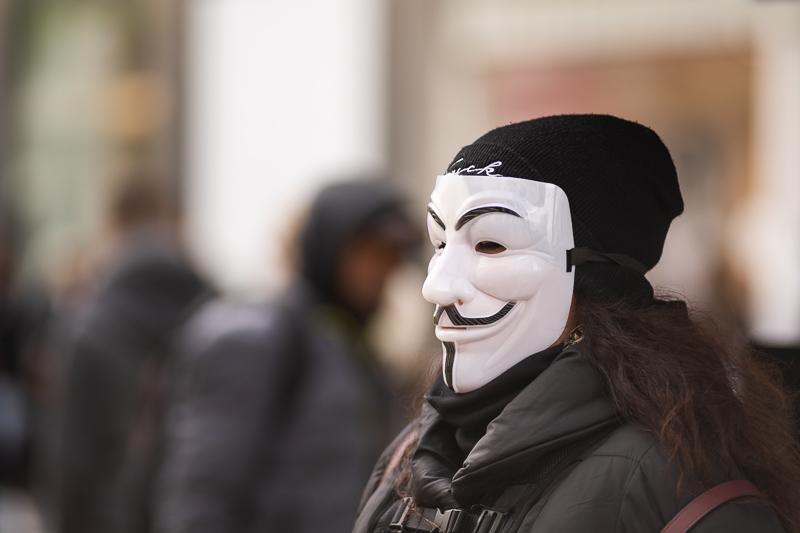
If you are using Nikon lenses with lens buttons (e.g. the Nikon AF-S 70-200mm 2.8G VRI) those also work.
AF performance
General remarks
There are so many Sony cameras with different AF algorithms available today and on top of that the cameras feature so many different autofocus settings, I cannot possibly test every combination even if I wanted to. And I don’t even want to.
I used these lenses like I normally use any native AF lens: AF-C Wide in combination with eye-AF or Flexible Spot and I used it on a Sony A7III as well as a Sony A7rII.
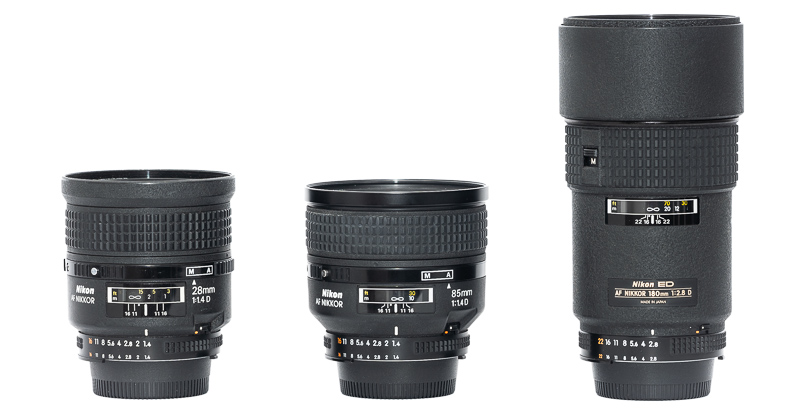
With all the Nikon AF lenses I tried the autofocus was very fast and reliable. It actually felt as snappy as using a native lens. But there is more: with the AF(-D) lenses the AF was actually much faster than on a Nikon camera (tried with a D700 with MB-D10). The eye-AF also worked perfectly, no matter where in the frame the eye was located.
Have a look at the table above though, with the AF-D lenses the combination of stopped down shooting and AF-C wasn’t possible with the LA-FE2. I already contacted the manufacturer of the adapter about this.
Stills
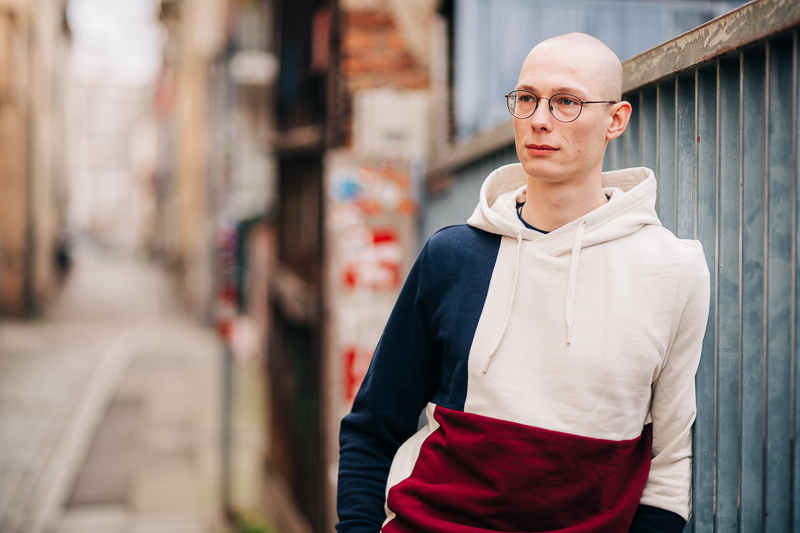
Interestingly even tracking worked reasonably well. But I am talking about normal use here, not chasing your dog running towards you or some crazy bird in flight stuff.
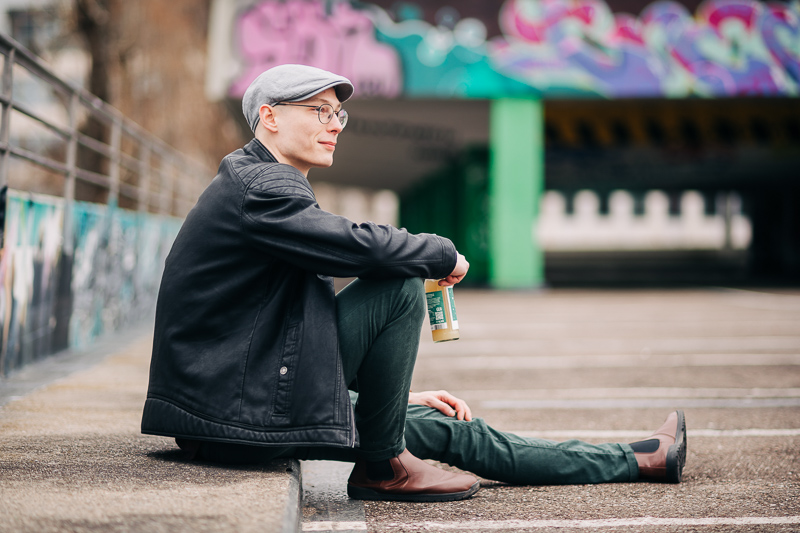

I used these adapters with several consecutive hours of shooting and I did not encounter any issues like camera freezes or the like.
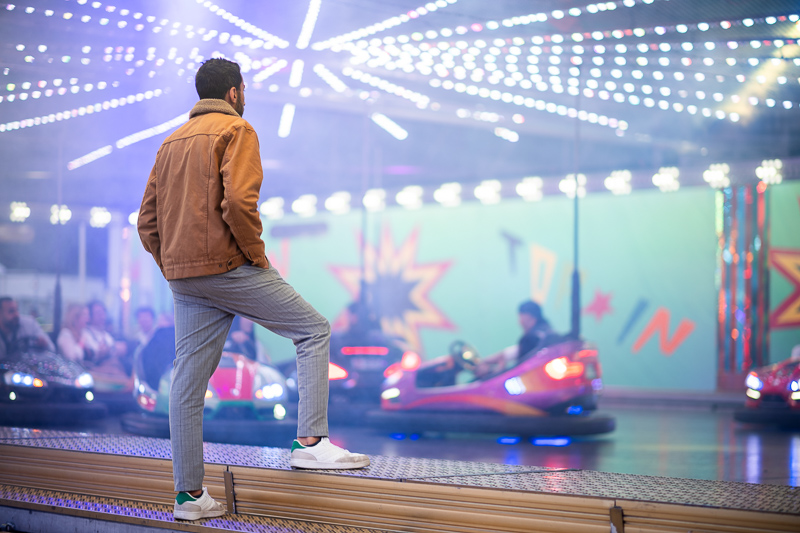
I did encounter a noticeable drop in AF speed in low light though.
Video
In video mode AF does not work at all, it hunts like crazy but never manages to hit the target.
Conclusion
good
|
average
|
not good
|
I wish these Monster adapters had already been available in 2016. They would have allowed me to keep using some of my Nikon lenses and that would have saved me a lot of money back in the day.
These are also generally some of the better AF adapters and the AF works at least as well as that of the metabones and Sigma MC-11 Canon-EF to Sony-E ones.
I did encounter some compatibility issues as described above though and I also found there to be some differences between the LA-FE1 and the LA-FE2, which I did not expect. Generally my impression is: the newer the lens, the better it will work. All the six f/1.4 “gold ring” primes (released 2010 to 2017) for example worked flawlessly on both adapters.
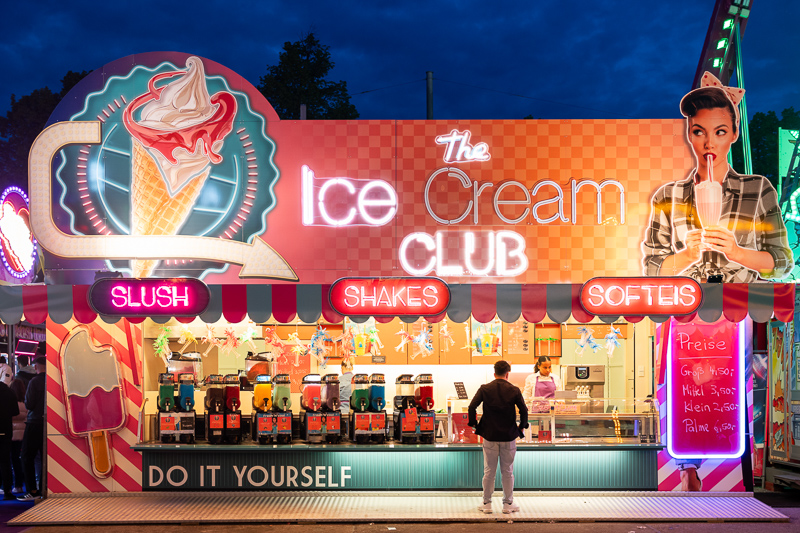
Thanks to these adapters there will definitely be more reviews of Nikon F-mount AF lenses in the near future so we can try to find out, if there are some good deals to be found there.
buy the Monster LA-FE1 for ~$250 from ebay.com | ebay.de (affiliate links)
buy the Monster LA-FE2 for ~$440 from ebay.com | ebay.de (affiliate links)
Further Reading
- Nikon Lens Reviews
- Lens aberrations explained
- Review: Laowa 35mm 0.95 FE
- Review: MS-Optics 50mm 1.0 ISM
Support Us
Did you find this article useful or just liked reading it? Treat us to a coffee!
![]()
![]()
![]() via Paypal
via Paypal
This site contains affiliate links. If you make a purchase using any of the links marked as affiliate links, I may receive a small commission at no additional cost to you. This helps support the creation of future content.
Latest posts by BastianK (see all)
- Review: Canon EF 50mm 1.0 L USM – Still the world’s fastest AF lens - December 30, 2025
- Review: Nikon Nikkor 105mm 1.8 Ai-s - December 28, 2025
- 2025 – Year in Review - December 23, 2025

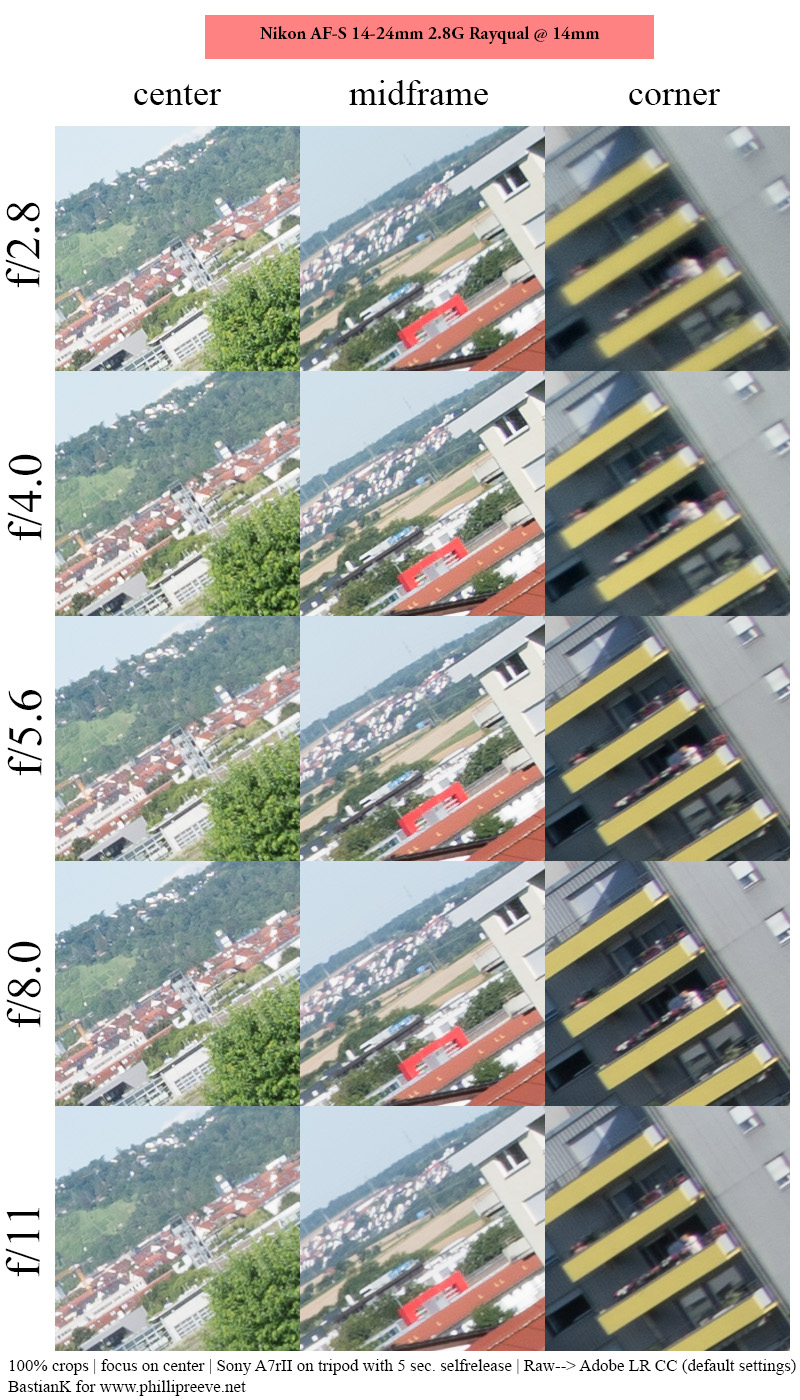
Be sure to update the LA-FE2 firmware to 2.0 before trying it with a screw-drive AF lens. When I was using it with the original 1.0 firmware, the adapter would sometime goes crazy all drill the lens with the screw driver like a psychopath until you remove the battery. I did not see this phenomenon since the latest firmware update.
If only they would make the latter one in Z mount too.. 🥲
Anyone try the LA-FE2 with the Megadap ETZ21 (Pro) adapter to get screw drive F mount lenses to autofocus on Nikon Z bodies?
The irony of using two 3rd party adapters to get a Nikon lens to work on a Nikon body, heh…
These type of adapter is fairly dumb. The control for adapted AF SLR lenses is in the camera body. Sony has adapted lenses always focus wide-open. The more complicated AF adapters bypass that and have the adapted lenses emulate native behavior.
What I meant to add is that you can’t stack these dumb AF adapters onto a E to Z AF adapter as neither those adapters nor the Nikon cameras have Sony adapter support.
Thanks for this much needed review.
“The lenses focus at maximum aperture like on a DSLR and only stop down for taking the shot. This is not great if you are using lenses with focus shift and it can also lead to somewhat less reliable exposure metering compared to what you are used to from native lenses” —- This is the most annoying feature for me. I’ve resold lenses just because of this problem.
Fortunately my 20mm/1.8G works phenomenally well, even in low light conditions! I am only hoping that the VR 200-500/5.6 would work well with this adapter. I haven’t found any reviews about this, but they are listed as compatible. Do you anticipate that there would be any problems with that?
So far the in lens VR seems to work well, but I didn’t do any scientific tests of that aspect.
“The eye-AF also worked perfectly, no matter where in the frame the eye was located.”
I just want to ask for a confirmation and clarification on this. It surprised me. When using the Sigma MC-11 with a Canon lens, on my Sony A9, this is not *quite* the case. And I had thought/understood up to now that this was just how things are, with any of the best adapters on the Sony system – that it was some kind of software limitation Sony applies whenever adapters are in use…
Eye AF works reliably and accurately, yes, but not across *all* of the frame – only most of it. The further edges of the frame do not focus well: by that I mean the “top” and “bottom” of the frame, when you’re shooting in portrait orientation… or the “left” and “right” edges if you’re shooting in landscape orientation. Focusing is only good in a broadly square area, which covers most of the frame, but not all the way to the edges of the 3:2 rectangle of the camera sensor.
This becomes relevant sometimes when shooting portraits, in portrait orientation, where the model’s head/eyes are near the top of the frame. I find there is often a nuisance with getting the eyes to focus in this situation and I have to frame the shot rather conservatively and carefully (a little more slowly and fussily) to compensate for it.
My fully native lenses do, of course, focus all the way across the frame on my a9 as I would expect them to. The a9, just like your a7iii, has good across-the-frame sensor PDAF coverage and is physically capable of focusing anywhere. It’s just some kind of (presumably artificial/firmware-based) limitation in the camera stopping an adapted lens from doing everything a native lens would.
I wanted to be sure I hadn’t just been imagining all this, so I just tested it again. When I use a Batis 135, I can focus and reliably obtain Eye AF absolutely everywhere in the frame. When I use a Canon 200mm f/1.8 on an MC-11, I find it focuses well everywhere except the frame edges.
Has this Nikon adapter overcome this limitation, and exceeded the AF frame coverage you get with for example an MC-11? Or is the frame coverage, as I’d have expected, a bit less than when shooting a native lens?
People who shoot with Nikon camera bodies tell me that their adapters – such as the Fringer adapter – have no focus area limitations at all. The whole frame focuses reliably. (And they have no framerate limitations, either). I have always assumed that these limitations are just an arbitrary software restriction Sony puts on adapted lens performance to encourage people to buy native lenses. Nikon camera bodies seem to be a more universal recipient of adapted lenses, since you can adapt Canon, Nikon, and even Sony E lenses to them with (I’m told) rather flawless and unrestricted performance.
It works well wherever there are phase detect AF points which varies with camera model.
You discussed the issue where some adapted lenses focus only at maximum aperture, and then (if you want to shoot at a stopped-down aperture) only stop down to your requested aperture when you fully press the shutter to shoot. You described the potential for focus shift arising from this with some lenses.
I’d just like to add another aspect of this behaviour, that I find irritating: shutter lag. Because the camera is stopping down to shoot, only at the moment you finally fully depress the shutter… not beforehand… it takes longer to react to your instruction, and actually fire the shutter. It has to wait for the aperture blades to move into position before it shoots.
The camera takes the shot a little while after you tell it to. There is an added delay of a fraction of a second. This can lead to ‘missing the shot’/moment that you were trying to capture.
On my a9, there are mitigations to this behaviour.
Shooting in Continuous Low, the camera focuses at maximum aperture and then stops down to shoot – for each and every shot. Bad. However, when shooting in Continuous Medium (or High), the camera focuses at maximum aperture for the first shot, but then seems to focus and shoot at the selected, reduced aperture for every subsequent shot in that same burst while you keep the shutter depressed.
So if you anticipate and start shooting early, then you’ll still ‘get the shot’ – with the minor downside of taking additional wasted frames (especially given the higher framerate selected) to have to sift through and delete later.
Perhaps this advice also applies to your Nikon adapter and your A7iii?
when i set the aperture ring to the highest value f/16 on 28/1.4D, it actually is f/16, even thought using the dial on camera to set to f2 or what ever value, you can tell from the iso raising, and will be overexpose from f/5.6 up, whether i miss any setting? thanks.
Sounds like your adapter is defective.
Did you find a difference with the FE1 vs FE2? I’ve been pretty happy with the FE1 since I got it and use mainly with the 105 1.4. Recently the mounts don’t seem as solid and I have had a few camera freezes so have stopped using it. I’m reluctant to spend the money on another one of these if it isn’t much better.
FE2 definitely has less freezes and there are some small differences.
Mount is (sadly) the same though.
Thanks for confirming. If it was half the price or the same as the first one I’d probably have bought it already. It costs as much as some lenses which is a stretch when it could break again!
Did you update the LA-FE1 to FW 06?
I did. I was hoping it was fixed as didn’t do it at home. Took it out for a 1 hour shoot, got some beautiful shots but at least 2 lock ups. I can’t have that happen at a wedding which is where I’d really like to use the lens. The alternative is the Sigma 105 but it’s intimidating for people in front of it as well as weighing a ton! If Sony came out with a 100 or 105 1.4 I’d jump on it right away. It’s been a rumour for a while now and I hope it comes true.
Unfortunately, I am not satisfied with the LA-FE2 and hope for some improvements through firmware updates.
Actually, according to the manufacturer, my two favorite lenses (screw-drive) should be supported:
Nikkor AF 2.8/80-200mm D (rotary zoom)
Nikkor AF 2.8/35-70mm
The autofocus does not work at all with either lens, it just moves back and forth frantically without finding the focus point.
I have tried two different adapters and of course updated the firmware to version 2 after it was released. This was also unsuccessful.
According to the manufacturer, my Nikkor AF 2.8/80-200 mm ED push zoom, version 1, is not supposed to be supported, and even after a few tests it is not.
However, I was able to use the following lenses successfully:
Nikkor AF 3.5-4.5/35-135mm N
(Screw-Drive)
Nikkor AF 3.5-4.5/35-70mm D
(Screw-Drive)
Nikkor AF 1.8/50mm
(Screw-Drive)
Nikkor AF-S 3.5-4.5/18-35mm G ED
Nikkor AF-S 3.5-5.6/28-300mm G ED VR
In fact, I sometimes shoot with this superzoom, but also with an Intrepid 4×5 inch…
Maybe someone can do something with this information.
Greetings Stefan
Thank you very much for the interesting and helpful review. I have seen that you have tried the Nikon AF 105mm 2.0 D DC. Does the autofocus also work reliably when using the lens in nonzero defocus ring position? I’m asking because these nonzero defocus control settings cause a lot of focus shift when I’m using it on my Nikon D810. On mirrorless cameras this should (at least in theory) not be an issue anymore.
I mainly shot the lens at f/2 and with the defocus set to R2, which worked without issues. I didn’t try more extreme settings as I found the lens to be too soft here.
Thank you! In my experience the lens is not too soft (at least for me) when defocus is changed, but the focus point shifts forwards and backwards. This can be compensated by focusing manually. But never found a way to autofocus this lens reliably with nonzero defocus setting.
Quick Q,
I’m contemplating getting the Nikon 200-500mm again now, but I noticed that with many of the telephoto zoom lenses you mentioned these adapters induce additional vignetting. Is there any way of knowing if this would happen on a 200-500mm or is it really something I have to test and see for myself? Is there a general about telephoto zoom lenses where you would expect this to always happen?
I fear that is one of those things you have to test for yourself.
Being an “E” lens you need one of the monster adapters to be able to change the aperture setting.
So far the 70-200mm 2.8 and 200mm 2.0 lenses I tried all had some additional vignetting here.
I actually think it might be more worthwhile to save up for a Sony 200-600mm, which should actually not be much more expensive than a Nikon 200-500 + Monster adapter.
Thanks for the advice! The complicating factors are that 1) I already own the first Monster Adapter so it makes it a lot cheaper, 2) I ever so slightly prefer the rendition of the Nikon, 3) the slight increase in speed (the Sony becomes 6.3 at 300mm), while 1/3 stop seems trivial, actually matters to me at extreme focal lengths (and also since wildlife comes out more in lower light settings). IS only goes so far as well because sometimes you need to have a higher SS to capture moving subjects which only a faster aperture will help you with. So the Nikon is a little more attractive. I wonder if I can find my information on that. Maybe I’ll email MonsterAdapter and ask them.
Кто-нибудь пробовал данный адаптер с Sony a7m4 и Sigma 150-600?
Has anyone tried this adapter with Sony a7m4 and Sigma 150-600?
Thank you BastianK for this great review! I am considering a Nikon AF-S 300mm f/4E PF ED VR on my A7rIV. Anyone tried this combination with a Monster?
Being a late “E” lens it should work well.
There are two Monster adapters now with screwdrive for AF-D lenses: One for Sony E-mount and one for Nikon Z-mount.
Do you think you can stack the Sony version on top of an E-mount to Z-mount AF-Adapter and would it behave worse, equal or maybe even better than the native Z-mount version?
If it works than worse.